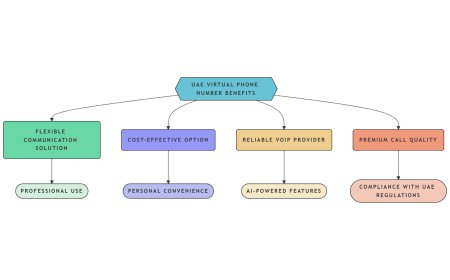What Offshore Development Looks Like Post-Pandemic: Trends & Shifts to Know
Explore how offshore development has changed post-pandemic. Discover key trends, global shifts, and how businesses are adapting. Start building smarter today.

Offshore software development has advanced in the post-pandemic realm. The shift towards remote working is reshaping the outsourcing approach. Businesses now seek more than cost savings. They want flexibility, faster delivery, and reliable talent. Offshore software development is no longer about delegating low-level tasks. It has become a strategic move.
This blog explores how offshore development has changed. Let's discuss what trends are shaping the way to its growth.
Offshore Development In A Remote-First World
Remote Work Made Offshore the Norm
The pandemic proved that remote work is possible for most tech roles. Before 2020, many firms hesitated to embrace remote models. They believed communication and productivity would suffer. That changed when lockdowns forced businesses to adapt.
Remote collaboration tools have improved. Platforms like Zoom have become standard to remain connected. Teams learned to work across time zones. Offshore teams began operating as extensions of in-house teams. This remained even after they became part of the internal team.
Today, businesses treat offshore software developers as their in-house members. Daily standups, sprint planning, and even casual check-ins now happen across borders. This shift has normalized offshoring across industries.
Talent Availability Drives Decisions
The technology expertise deficit is still a significant hurdle that remains. Many regions are having a hard time finding skilled software developers. To meet this demand, more and more companies are going offshore for their partners.
This approach allows hiring developers without any boundaries. Local companies could get the skills they needed without the need to hire. Firms that hire AI and cloud developers from different regions are an example of offshoring.
Nowadays, the question about the location of the team has changed to the one about the deliverables of the team. Consequently, the location of the developers is less important. It is essential to get skills and the output.
Nearshore and Multi-Shore Models Gain Popularity
There was a time when offshore development was best exemplified by remote locations. Now, the businesses are changing their strategy to go only for offshore software development. Instead, they opt for nearshore and multi-shore solutions. This way, they collaborate to solve time zone issues.
Nearshore outsourcing is a situation where you execute tasks with groups that are situated in regions that are geographically close to you. A U.S. company may choose developers in Mexico or Colombia. A Western European firm might work with developers in Poland or Romania.
Multi-shore models split development across different regions. This approach helps mitigate various development risks. Thus, improving coverage across different time zones.
These models provide better overlap with in-house teams, improving communication and coordination.
Greater Emphasis on Security and Compliance
With offshore development more integrated in business, there are certain things to address. Businesses demand security practices from offshore software development services. This includes secure communication, access controls, and adherence to global standards. ISO certifications and data protection policies are now key selection criteria.
Offshore vendors must invest in security infrastructure. Trust and transparency have become as important as cost and speed.
Shift from Project-Based to Product-Focused Engagements
Offshore development was mostly project-based a few years ago. Organizations assigned a task that had a fixed scope and deadline.
Businesses are looking for offshore partners who know their product. They could have helped to create a roadmap for the product and then grow with it. This means that they need to be more involved, working together continuously, and being in agreement with the business goals.
Partnerships that are product-focused bring about the best results. Teams have knowledge about user needs, watch product metrics, and develop scalable solutions.
Focus on Soft Skills and Culture Fit
Technical skills remain essential. The companies are emphasizing cultural alignment and soft skills. Employees must be able to communicate, they must be proactive, and working with diverse teams must come easily to them.
Offshore teams cannot limit themselves to just technical specifications if they want to be successful in their business sectors. They need to update each other, give ideas, and be ready to respond to any changes.
Modern companies often check applicants' communication skills, problem-solving ability, and team fit during hiring. Competent time zone partners and work value compatibility are essential elements of the current situation.
Rise of Hybrid Hiring Models
Hybrid models are a mixture of in-house and offshore software development. Firms maintain a main team and boost capacity with developers through offshore development services. This arrangement provides flexibility and control.
Hybrid hiring fits startups and mid-sized companies perfectly. They can grow without incurring heavy fixed costs. Offshore developers assist the growth while local teams make core decisions.
In addition, this model not only shortens the time of onboarding but also helps team continuity.
Emerging Offshore Software Development Tech Skills In Demand
Offshore development is no longer limited to web or mobile apps. Demand for emerging tech skills has grown fast. Companies now seek offshore teams with expertise in:
-
AI and machine learning
-
Blockchain
-
Internet of Things (IoT)
-
Cybersecurity
-
Cloud-native development
-
Data engineering and analytics
Offshore firms have expanded their offerings to include these skills. They invest in upskilling teams and adopting modern tools. This allows clients to explore innovation without building new capabilities in-house.
Time Zone Management Becomes Strategic
Time zone differences used to be a barrier. Now they are part of the strategic planning. Companies use time zone gaps to their advantage. Many firms now design their workday to maximize these overlaps.
Rise of Specialized Offshore Providers
Niche offshore providers are on the rise. They are targeting by industry or technology. To illustrate, one group is concentrating on fintech platforms, while another is focusing on the healthcare or e-commerce sectors.
Clients would rather work with vendors who are knowledgeable about their business sector. This practice diminishes both the time needed for onboarding and solution quality. Specialized offshore firms are the source of pre-built tools, reusable components, and domain knowledge.
The trend has been a generator of value-driven partnerships. The companies are provided with tailored solutions instead of generic services.
Partnering with an offshore development company can help businesses tap into a global pool of skilled professionals.
Bottom Line
Offshore development services are not only a cost-saving strategy. It has become a strategic decision that enables firms to become more agile and scalable. Service providers who bring skill, flexibility, and accountability are the most valuable. Building trust and business goal alignment are the keys to successful offshore development today.
Book a free consultation to avail of our services today!









































